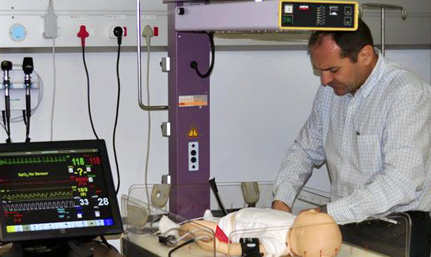|

|
|
New Clinical Skills Simulation unit is one of its kind.
Photo: Supplied
22 February 2013 |
The Faculty of Health Sciences at the University of the Free State (UFS) can now boasts with a new Medical Clinical Skills Simulation unit (MCSU) at the School of Medicine.
This newly established Clinical Simulation Unit is the first dedicated clinical simulation unit of its kind in South Africa. It was opened on Thursday 21 February 2013.
This facility is equipped with an operating theatre, Intensive Care Unit, two simulation and three private rooms.
In addition, the Unit has control rooms with cameras for recording purposes and debriefing facilities, the latter with video equipment for playback of recorded scenarios.
The Simulation Unit at the UFS’ School of Medicine is based on accredited units in the USA and the UK.
Dr Mathys Labuschagne, Head of the Simulation Unit, says the concept for this kind of unit is still new, but is already a very important part of clinical skills training in the health professions.
“We are the only university in South Africa with a unit dedicated to clinical skills simulation only and not a combination of clinical skills training which includes some simulation.”
The primary goal of the MCSU is to provide educational opportunities to undergraduate and postgraduate medical students, as well as opportunities for other healthcare students in the Faculty of Health Sciences, to be exposed to inter-professional skills training. The MCSU will play a role in quality assurance of training and assessment, as well as research.
The aim of the Clinical Simulation Unit is to provide a facility where medical and other healthcare students or professionals can be exposed to:
- Training in a safe environment.
- Training without harm to the patient.
- Scenario-based learning.
- Debriefing.
The facility will also be utilised for post-qualification refresher and training courses.